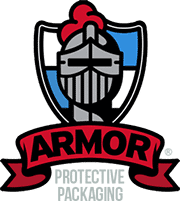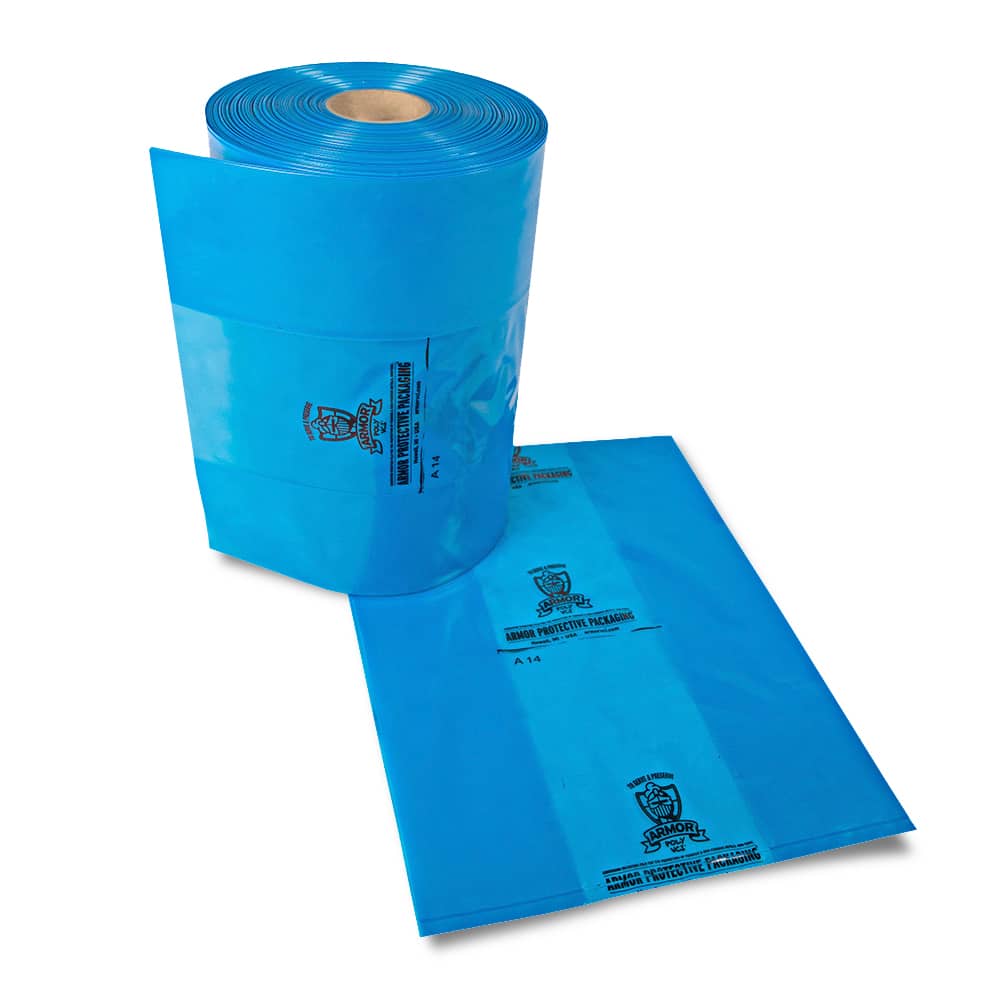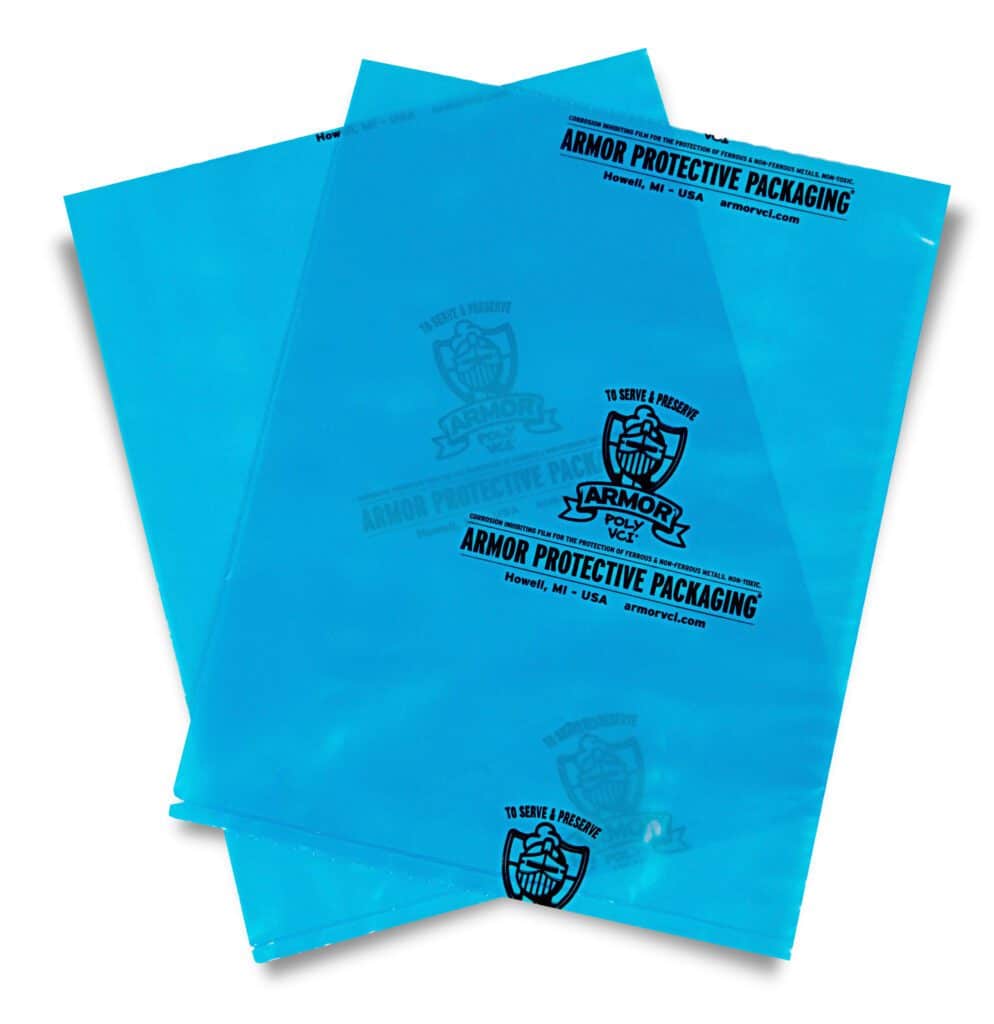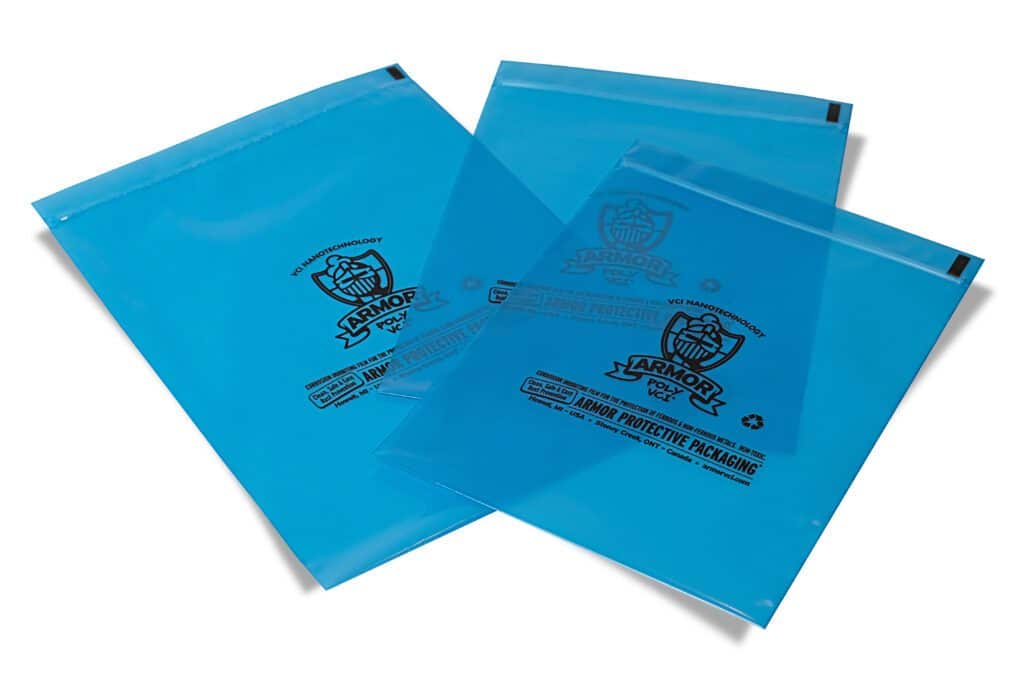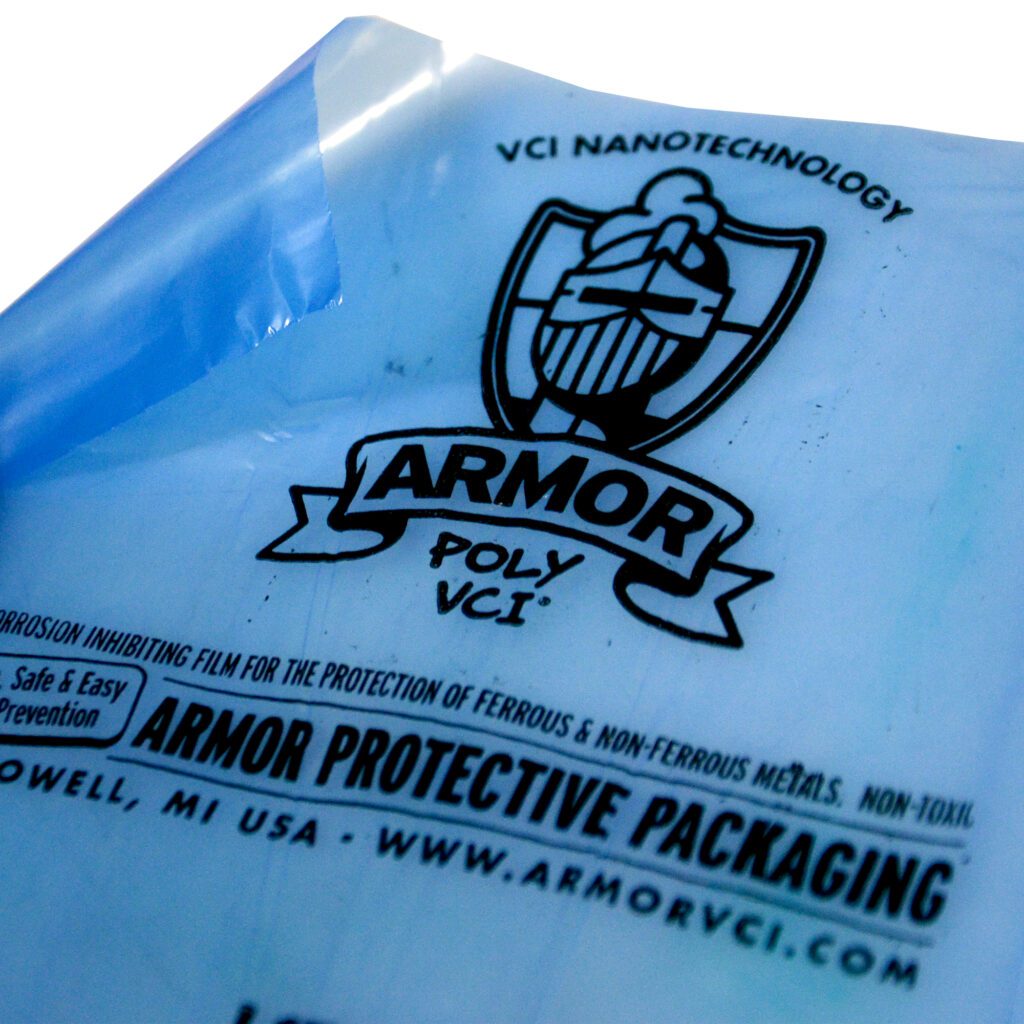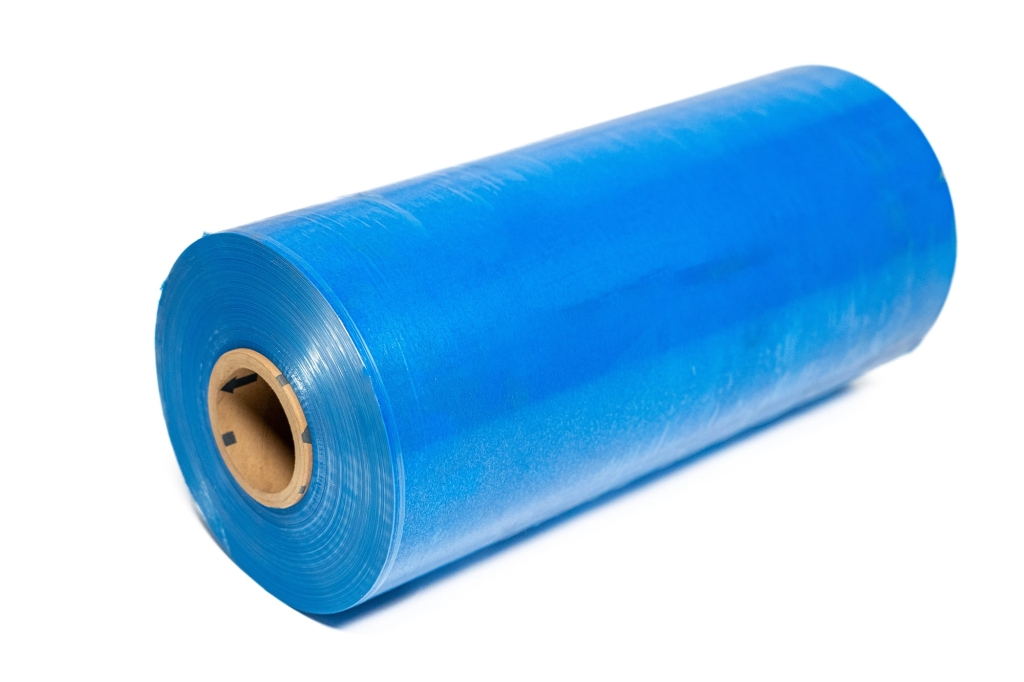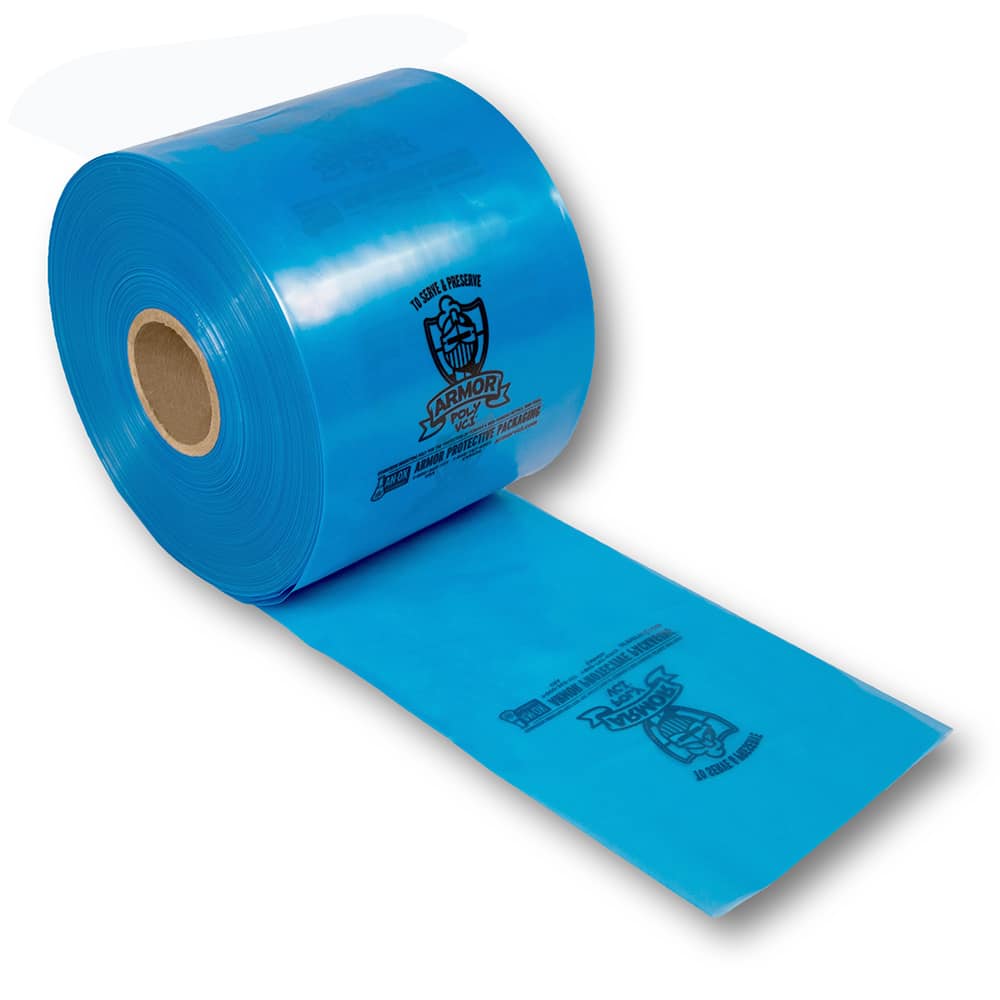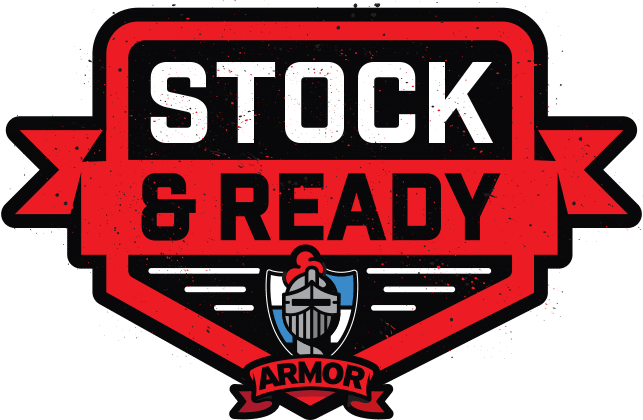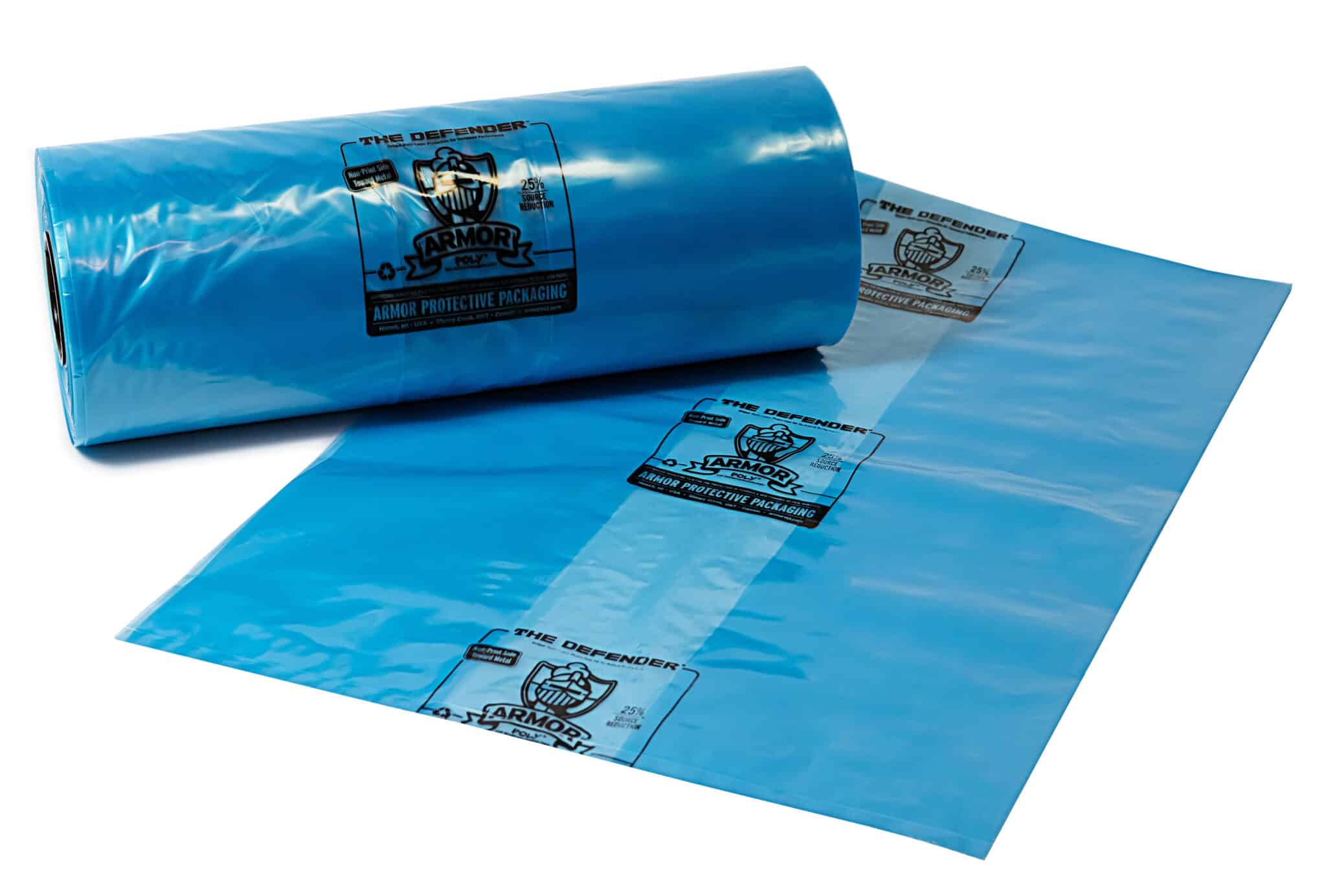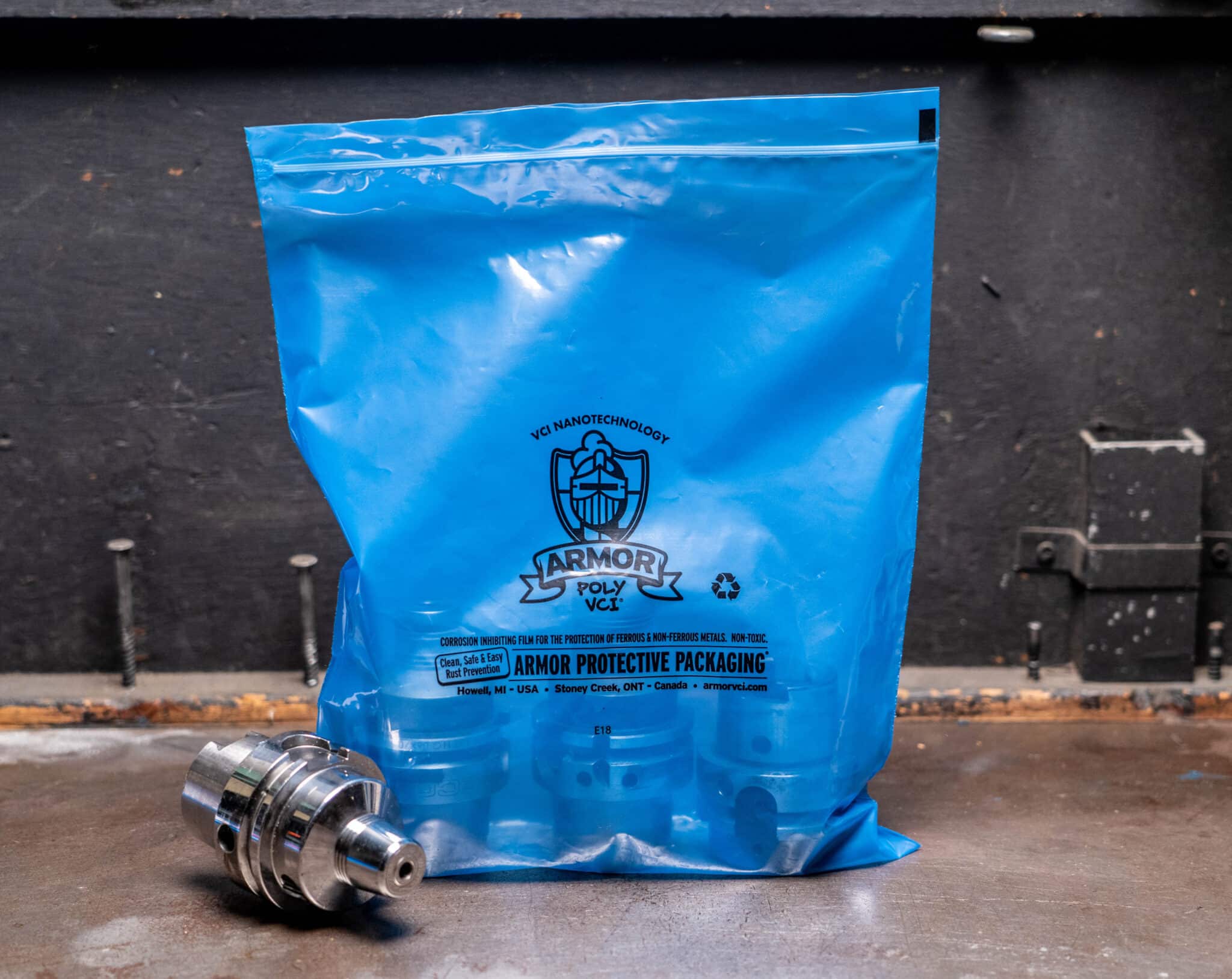
VCI poly bags are everything that traditional oil and grease rust-prevention methods are not; they are clean, safe, easy-to-use and so much more. Let’s look at VCI poly bags and how they save your metal parts from corrosion and save you time, money, and resources.
What is a VCI Poly Bag?
A VCI bag is made of polyethylene film that has been infused with rust-preventing vapor corrosion inhibitors (VCI) and then manufactured into bags with a range of different shapes and sizes. When a metal part is sealed in a VCI bag, its VCI vapors release to form a shield of protection on the surface of metal that is only 2-3 molecules thick. This VCI shield repels moisture and other contaminats that can cause corrosion. When the bag is opened, the VCI evaporates, and the metal or metal parts are ready for use, with no need for cleaning.
VCI poly bags are highly efficient, cost-effective and provide metal parts the dual protection of both a physical and molecular barrier that prevents rust for up to three years. In addition, the process of packaging metal parts in a VCI bag is quick and easy; simply place metal parts in the bag and seal it tight.
VCI Poly Bag Options
Before choosing a VCI poly bag to keep your metal parts clean and rust-free, there are several options to consider:
• Style of bag: flat or gusseted
• Closure method: resealable zip-top, heat seal, tape or tie
• Gauge/thickness of the poly film
• Type of polyethylene film: high, low or linear low density
A flat VCI poly bag is sealed on three sides with an open top. A gusseted bag has a fold or pleat on each side that allows it to expand. Which type of bag is best depends on the size and shape of the metal part(s). The bag is the correct size and style when it encloses metal parts without stretching or straining, and it should allow enough excess to properly close, which is essential to the effectiveness of VCI in preventing rust.
Once metal parts are placed in the VCI bag, it is important that the bag closes securely to ensure the rust-preventing VCI vapors are contained. There are many options for closing and securing VCI bags, such as a heat-sealing, reclosable zipper-tops, wire- or twist-ties, or fold and tape.
The gauge or thickness of your VCI bag will directly impact its strength, durability, and its price. A unit of measurement called a Mil is most often used to calculate the thickness of the VCI poly film. One Mil is equal to a thousandth of an inch. To determine the correct Mil VCI poly bag for your application, consider factors such as the weight of the metal parts that will be placed in the bag (heavier metal parts require a bag with a higher Mil thickness), how durable the bag needs to be (will the bag be used for temporary or long-term storage/shipping?), and what level of protection the bag needs to provide (a bag with a lower Mil thickness is thin and more likely to tear while a bag with a larger Mil thickness is stronger, but also more costly).
Finally, the type of polyethylene film that is used to make your VCI poly bag is an important part of the VCI bag’s overall performance in protecting metal parts. High density polyethylene (HDPE) is strong, dense and very durable. It has high moisture barrier properties and is resistant to impact and punctures. While HDPE’s rigidity is an asset, it does make it more susceptible to stress-cracking. Low density polyethylene (LDPE) is very flexible, but not as dense or durable as HDPE. LDPE easily stretches when put under tension. The benefit of LDPE’s “softness” and flexibility are that it is less likely to experience stress-cracking. Linear Low-Density Polyethylene (LLDPE) is the most flexible or pliable, giving it greater puncture- and tear-resistance over LDPE. LLDPE is ideal for use when the VCI poly bag will experience stress or impact during storage or transport.
Shop Poly Products
10 Benefits of VCI Poly Bags
There are many advantages to using VCI poly bags to prevent rust and corrosion on metal parts. Here are the top 10:
1. Ease of use: simply place metal part in VCI bag and seal airtight
2. Clean and dry replacement for rust-prevention oil or grease, which is both messy and labor-intensive to apply and remove
3. Provides a physical barrier that protects metal parts from water, dirt, dust, and other contaminants
4. VCI vapors form a molecular barrier on the surface of metal to block moisture
5. Metal parts can be used immediately upon removal. There’s no need for cleaning or degreasing
6. Economical: saves labor, time, and the expense of RP oil/grease
7. Available in a range of sizes and thicknesses for use with single or multiple metal parts of all shapes and sizes
8. VCI bags are transparent, which allows for easy identification, inspection and/or inventory of metal parts without removal from the bag
9. Can be combined with other VCI products to protect metal parts in extreme conditions
10. Safe: VCI bags are non-hazardous, environmentally friendly, recyclable, and sometimes reusable
VCI poly bags are ideal for protecting metal parts that are in process, in storage, or in transport. They are so versatile that they can be used to protect both ferrous and non-ferrous metals, including small parts to large components. They are also available in a range of sizes, from pocket-sized to bin liners. For clean, safe, and easy-to-use rust prevention, VCI poly bags, such as those offered by Armor Protective Packaging® in the ARMOR POLY® line of rust prevention products, are the perfect fit.
